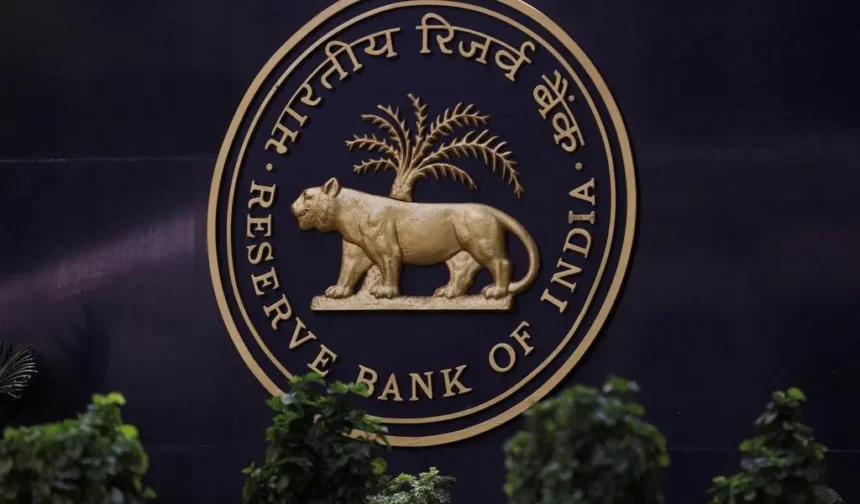(CTN News) – The Reserve Bank of India (RBI) is expected to reduce key interest rates by up to 25 basis points this week, driven by diminished inflation, which supports a lenient monetary policy, and the urgent necessity to stimulate growth amid the global economic challenges presented by reciprocal tariffs imposed by the United States.
The Reserve Bank of India’s Monetary Policy Committee, chaired by Governor Sanjay Malhotra, reduced the repo rate by 25 basis points to 6.25% in February.
The most recent alteration occurred 2.5 years ago, marking the inaugural decline since May 2020. The Monetary Policy Committee, responsible for setting rates, will commence discussing during its 54th meeting on April 7, 2025.
The announcement is set to be disclosed on April 9, 2025.
The repo rate established by the RBI for short-term lending has remained unchanged at 6.5% since February 2023. The rate has been incrementally increased to 6.5% since the RBI last lowered it in May 2020 amid the COVID-19 pandemic.
Madan Sabnavis, chief economist of the Bank of Baroda, predicts that the credit policy would be published this week in light of numerous economic and global developments.
He observed that, alongside the standard economic assessment, the MPC must evaluate the effects of the latest US tariffs on GDP forecasts and the currency.
“Although conditions appear favorable for a 25 basis points reduction in the repo rate, given the benign inflation outlook and stabilized liquidity, it is anticipated that the policy stance will shift to accommodative, indicating potential further rate cuts throughout the year,” stated Sabnavis.
On April 2, U.S. President Donald Trump enacted retaliatory tariffs between 11% and 49% on nearly 60 nations, including China and India. The implementation date is April 9, 2025.
Experts indicate that some of India’s export competitors, including China, Vietnam, Bangladesh, Cambodia, and Thailand, are facing elevated tariffs, presenting India with both opportunities and challenges.
The rating agency ICRA forecasts that the Monetary Policy Committee will reduce rates by 25 basis points at its May meeting while keeping a neutral stance.
“We do not anticipate any significant announcements regarding liquidity injections during the MPC meeting, such as reducing the CRR.”
As a result of the maturation of long-term Variable Rate Repos and the unwinding of short positions in its forward book, the Central Bank is likely to continue its liquidity interventions to counterbalance the depletion caused by the maturation of long-term Variable Rate Repos.
Recent RBI liquidity injections help transfer rates.
The industry body Assocham has asserted that it advocates for a cautious approach in the forthcoming monetary policy, recommending a wait-and-see strategy rather than an immediate rate reduction.
The Reserve Bank of India (RBI) has lately instituted many initiatives to enhance market liquidity.
The measures will affect the growth and consumption of capital expenditures; nonetheless, we must remain patient. Sanjay Nayar, president of Assocham, believes that the RBI would sustain rates at their current level throughout the policy cycle.
Notwithstanding global concerns, he predicted that the Indian economy would stay resilient in the forthcoming fiscal year. Considering the anticipation that retail inflation will be contained, a plausible estimate for FY26 GDP growth is approximately 6.7%.
Following a decline in retail inflation to a seven-month low of 3.61% in February, largely attributed to reduced costs for protein-rich items such as eggs and vegetables, the RBI has the flexibility to reduce interest rates once more next month.
The consumer price index indicates that retail inflation was 4.26% in January 2024 and 5.09% in February 2024. The most recent low occurred in July.
Pradeep Aggarwal, founder and chairman of Signature Global (India) Limited, predicts that the central bank would lower the repo rate by 25 basis points to 6% to encourage spending and economic growth.
He posited that a reduction in the policy rate would lead to an increase in borrowing, therefore stimulating investment in real estate and elevating demand for housing.
Mr. Aggarwal indicated that the actual impact of the rate reduction will hinge on the timeliness and efficacy with which commercial banks communicate the RBI’s policy decision to borrowers.
The MPC includes the RBI Governor, three members selected by the government, and two senior officials from the central bank.
SOURCE: TH
SEE ALSO:
Bitcoin Declines to $81,000 as Trump’s Tariffs Disrupt the Global Market.
China Says Trumps Reciprocal Tariff Plan Threatens Global Trade

Salman Ahmad is known for his significant contributions to esteemed publications like the Times of India and the Express Tribune. Salman has carved a niche as a freelance journalist, combining thorough research with engaging reporting.














